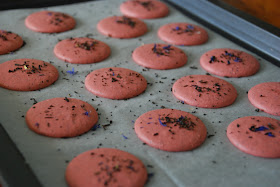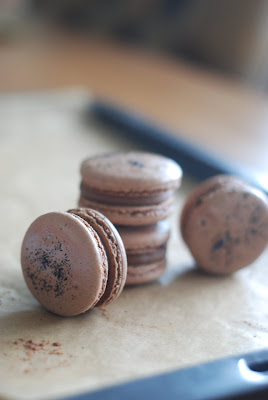
We are featured on Pooja Makhijani's beautiful blog, Notabilia, here with a gorgeous Huat Kueh recipe. This home recipe is from my collague, Kia Meau, and was originally written for a family charity cookbook. In Kia Meau's own words "the steaming process for the Huat Kueh creates a “bloom” that symbolises prosperity. Hence, Huat Kueh (also known as prosperity cake), is commonly used for offerings during ceremonies and Chinese New Year. My family will usually prepare the Huat Kueh during the Hungry Ghost Festival. Each time when we make the kueh, we always have an anticipatory “you-never-know-what-you’re-gonna-get” moment as we were not allowed to peek inside until the time is up."
I, on the other hand, had never eaten Huat Kueh before last year, having always associated them with Chinese religiousity and prayer, as they were often dotted with red dye on the top surface. When I was young, I balked at the bright colours and I felt they were often dry (especially if left out in the sun or on an altar) or too sticky. The beautifully perfumed steam from the steamer drew me to try Kia Meau's kueh and I loved it, from the natural colour to the deep aromatic fragrance, which just goes to show that you learn a new thing about food everyday.
These kueh are made of gula melaka and coconut milk which makes them more healthy than the refined-sugared version, the taste is thus more mild while being more deeply flavoured and the texture slightly more sticky. This recipe fascinated me because I’d never seen one that told you to put the pandan leaves in the steaming water, thus perfuming the steam that goes up through the kueh. I hope you'll like it as much as I do.
o o o o o
Huat Kueh
8-10 stalks pandan leaves
Water for steaming
400 grams coconut sugar (gula melaka)
300 milliliters water
1 tablespoon butter
500 grams self-raising flour
1/2 teaspoon bicarbonate of soda
1 egg
250 milliliters coconut milk
1. Prepare a steamer. Tie 4-5 stalks of pandan leaves into a knot and boil together with water in the steamer.
2. Prepare the sugar mixture. Tie 4-5 stalks of pandan leaves into a knot. Add to chopped coconut sugar and 300 ml of water and bring to a boil until the sugar mixture becomes 550 ml.
3. Strain the pandan leaves and impurities out of the sugar mixture.
4. Stir the butter into the sugar mixture until it melts completely. Set aside to cool.
5. Sift the self-raising flour with bicarbonate of soda. Using an electic mixer, slowing mix in the sifted flour and bicarbonate of soda, egg, and coconut milk to the cooled sugar mixture.
6. Pour the huat kueh mixture into greased muffin trays and fill them to the brim.
7. Steam for 15 minutes. A longer time will be required for steaming larger huat kuehs. Do not open the steamer before the stipulated time.
8. Remove the muffin tray from the steamer and leave to cool for at least 10 minutes. Do not remove the huat kuehs from the muffin tray within that time as they need to be cooled in the trays to set.
9. Remove the huat kuehs from the muffin tray and place them on cooling rack to cool completely.
Makes 8 muffin-sized huat kuehs.
o o o o o
(Additional credits: Recipe: Phay Kia Meau, Photograph: Melvin Leong and Constance Kok.)











